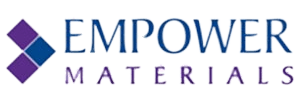Empower Materials Inc. is the manufacturer of QPAC®, the cleanest thermally decomposable organic/sacrificial binders in the world. The binders cleanly decompose into water and CO2 in various types of atmosphere while leaving almost no residue. This property contributes to the extensive usage of QPAC® in many challenging applications.
.jpg)
Image Credits: maxuser/shutterstock.com
QPAC® poly(alkylene carbonate) copolymers are an exclusive range of ground-breaking thermoplastics representing a real innovation in polymer technology. While conventional plastics have been mostly petroleum based, these materials are derived from carbon dioxide and are produced through the copolymerization of CO2 with one or more epoxides. The polymers obtained are clear, amorphous, readily processible, and have lasting mechanical stability. They are also eco-friendly as they consume 50% fewer petrochemicals, as opposed to other polymers which are 100% petrochemical based. Furthermore, the polymers may have biodegradable properties that are consistent with an eco-friendly binder.
The two most commonly used products within the range of binders are QPAC® 40, polypropylene carbonate, and QPAC® 25, polyethylene carbonate. However, a vast range of QPAC® polymers can be obtained using blends of epoxides to produce a specific reaction or by changing the epoxide monomer. The technical group at Empower Materials has the expertise needed to efficiently work with the customers to develop the right product for their application.
Production Capabilities of Empower Materials
As the world’s only commercial manufacturer of polyalkylene carbonates, Empower Materials is capable of manufacturing large quantities (1000's of kgs) of QPAC® 100, a terpolymer of polypropylene carbonate and polycyclohexene carbonate; QPAC® 40, polypropylene carbonate; and QPAC® 25, polyethylene carbonate.
Moreover, an extensive variety of other QPAC® polymers are possible through substitution of oxiranes (epoxides) using the same production equipment configuration. Besides QPAC® 25, QPAC® 40 and QPAC® 100 (polypropylene carbonate, polyethylene carbonate and polypropylene carbonate/polycyclohexene, respectively), the following have been effectively synthesized on pilot scale equipment: QPAC® 130 (poly-cyclohexene carbonate) and QPAC® 60 (poly-butylene-carbonate).
Also, Empower Materials has the technology to modify the molecular weight polymer across an extremely wide range.
Key Benefits of QPAC 40 Polypropylene Carbonate Organic Binders
The main advantages of QPAC®40 polypropylene carbonate are as follows:
- Co-firing in any atmosphere without oxidation
- Excellent adhesion and improved lubricity
- Products of combustion are only carbon dioxide and water
- Complete and clean burnout at low temperatures
Empower Materials is a materials company that specializes in producing a range of high-performance, biodegradable plastics polymers that are used mainly as sacrificial binders. These sacrificial binders known as QPAC are used in several highly technical applications. Empower Materials manufactures a family of QPAC polyalkylene carbonates that degrade entirely and uniformly into environmentally friendly products, making them ideally suited for high-performance applications such as precise assembly of micro and nano scale devices.
QPAC Binder for Metallic Pastes
One new fascinating application area for QPAC is as an organic binder for metallic pastes. Presently, QPAC®40 polypropylene carbonate is being used in electrode pastes as a binder. Electrode pastes containing QPAC binder have major advantages due to its low carbon residual levels which lead to electrical quality issues, including reduced defect rates.
Additional Applications of QPAC Organic Binders
Furthermore, QPAC binder is used in solar pastes and terminal pastes. QPAC has been effectively used as a binder in tungsten pastes, silver pastes, nickel pastes, and copper pastes for several solar and electronic applications.
Summary
To reiterate, the QPAC binder leads to enhanced efficiency and mechanical properties of systems using QPAC in their metallic paste formulations.

This information has been sourced, reviewed and adapted from materials provided by Empower Materials.
For more information on this source, please visit Empower Materials.